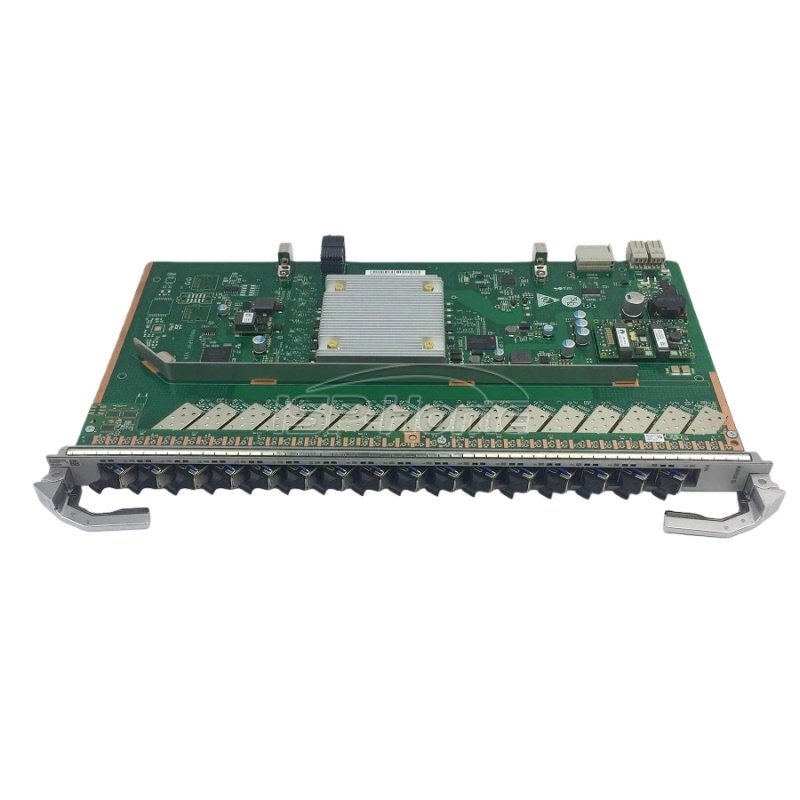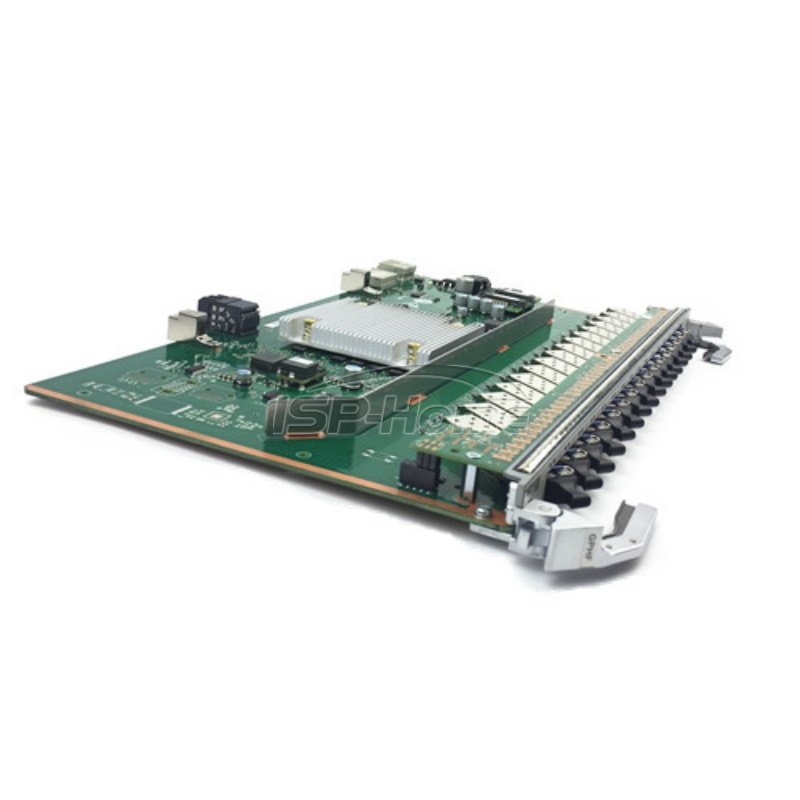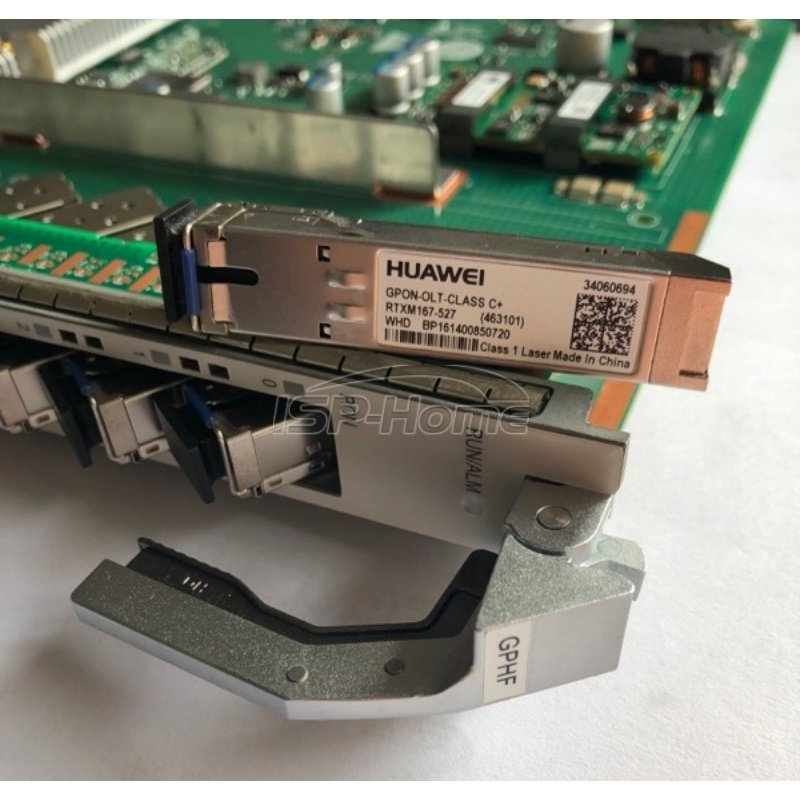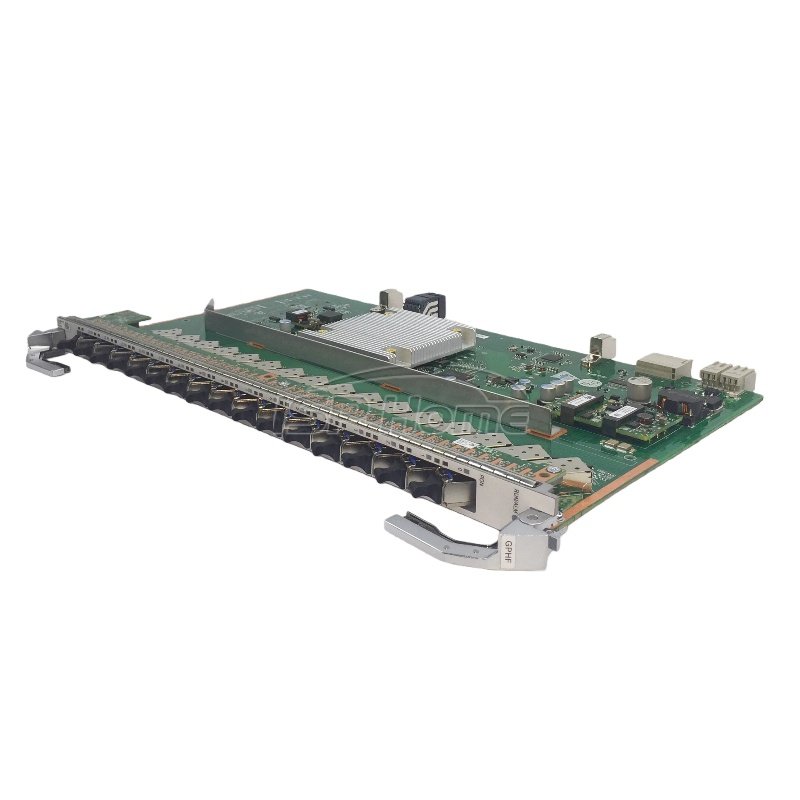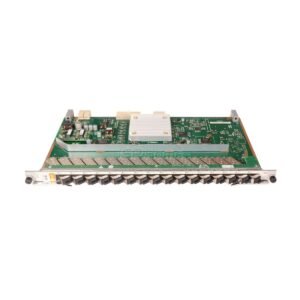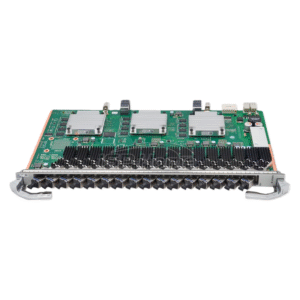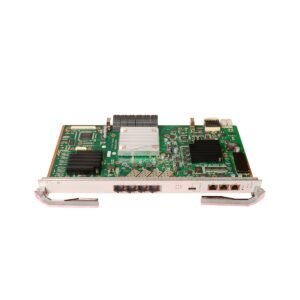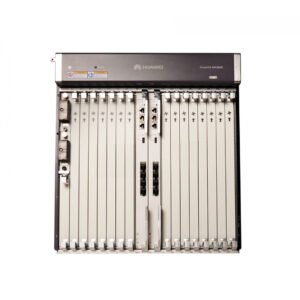Description
The Huawei H901GPHF is a 16-port GPON OLT interface board designed for the MA5800 series OLT (including MA5800-X2, MA5800-X7, MA5800-X15, and MA5800-X17 models). It supports C+ class SFP optical modules (Tx: 2.488 Gbit/s, Rx: 1.244 Gbit/s) and achieves a maximum split ratio of 1:128 per port, enabling FTTH connectivity for up to 2048 subscribers.
Key Specifications
Huawei 16-GPON Port Interface Card with C+ SFP module
Apply to Huawei MA5800 X2, X7, X15, X17 NG OLT system
Support split ration 1:128
Transmit Speed: 2.488Gbit/s, Receive Speed: 1.244Gbit/s
Interface Type: SC
Max Transmit Distance: 20KM
Transmit Wavelength: 1490nm
Receive Wavelength: 1310nm
Standards Compliance: ITU-T G.984.1, ITU-T G.984.2, ITU-T G.984.3, ITU-T G.984.4
C+ SFP Module Optical Power: 3 dBm~7 dBm, Receiver Sensitivity: -32 dBm
H902GPHF Specification
| Parameter Category | Parameter Item | Specification Value |
|---|---|---|
| Service Ports | GPON Ports | 16 |
| T-CONTs per PON Port | 1024 | |
| Service Flows per PON Board | 16368 | |
| GPON SFP Module (C+ Class) | Module Type | One-fiber bi-directional optical module, class C+ |
| Operating Wavelength | Tx: 1490 nm, Rx: 1310 nm | |
| Encapsulation Type | SFP | |
| Port Rate | Tx: 2.488 Gbit/s, Rx: 1.244 Gbit/s | |
| Output Optical Power (Min-Max) | 3.00 dBm to 7.00 dBm | |
| Receiver Sensitivity (Max) | -32.00 dBm | |
| Optical Connector Type | SC | |
| Optical Fiber Type | Single-mode | |
| Overload Optical Power | -12.0 dBm | |
| Performance & Capacity | Forwarding Capability | 40 Gbit/s |
| Maximum Frame Size | 2004 bytes (9216 bytes with jumbo frame) | |
| Maximum MAC Addresses | 131072 | |
| Max Distance Difference between ONUs | 40 km | |
| Extinction Ratio | 8.2 dB | |
| Physical Specifications | Dimensions (W x D x H) | 23.30 mm x 257.90 mm x 399.20 mm |
| Power Consumption | Static: 25W; Maximum: 50W | |
| Operating Temperature | -40°C to +65°C |
FAQ
Q: What’s the difference between H901GPHF, H901 GPSF, H805GPFD?
A:
| Parameter | H901GPHF | H901GPSF | H805GPFD |
|---|---|---|---|
| Port Configuration | 16 GPON ports with SFP optical modules | 16 GPON ports with SFP optical modules | 16 GPON ports with SFP optical modules |
| Maximum Split Ratio | Class B+: 1:64 Class C+/C++: 1:128 | Class B+: 1:64 Class C+/C++: 1:128 | Class B+: 1:64 Class C+/C++: 1:128 |
| Forwarding Capability | 40 Gbit/s | 40 Gbit/s | 40 Gbit/s |
| T-CONTs per PON Port | 1024 | 1024 | 1024 |
| Service Flows per PON Board | 16368 | 16368 | 16368 |
| Maximum Frame Size | 2052 bytes | 2052 bytes | 2052 bytes |
| Jumbo Frame Support | 9216 bytes (when enabled) | 9216 bytes (when enabled) | 9216 bytes (when enabled) |
| Maximum MAC Addresses | 131072 | 16384 | 16384 |
| Maximum Distance Difference Between ONUs | 40 km | 40 km | 40 km |
| FEC | Bidirectional | Bidirectional | Bidirectional |
| CAR Group | Supported | Supported | Supported |
| IPv6 Support | Supported | Supported | Supported |
| Variable-length OMCI | Supported | Supported | Supported |
| ONU-based Shaping or Queue-based Shaping | Supported | Supported | Supported |
| Load Sharing | Supported | Supported | Supported |
| High-precision Clock Time Synchronization | Supported | Not supported | Not supported |
| Type B Protection (Dual-homing) | Supported | Not supported | Not supported |
| Type B Protection (Single-homing)/Type C | Supported | Supported | Supported |
| Type B/Type C Protection | Supported | Not supported | Not supported |
| 1588v2 | Supported | Not supported | Not supported |
| Rogue ONU Detection and Isolation | Supported | Supported | Supported |
| Automatic Shutdown at High Temperature | Supported | Supported | Supported |
| Automatic Shutdown of Idle Port | Supported | Supported | Supported |
| D-CCAP Networking | Supported | Supported | Supported |
| 1:64 eOTDR | Supported (with FBG) | Supported (with FBG) | Supported (with FBG) |
| Operating Temperature | -40℃ to +65℃ | -40℃ to +65℃ | -25℃ to +65℃ |
| Power Consumption | Static: 25 W Maximum: 50 W | Static: 25 W Maximum: 50 W | Static: 25 W Maximum: 50 W |
Q: What are the key differences between the GPSF and GPHF service boards when deploying a GPON network?
A:
| Feature | GPSF Service Board | GPHF Service Board |
|---|---|---|
| Primary Application Support | FTTH | FTTH, FTTO, FTTM, D-CCAP |
| QoS Capability | Standard QoS | 4-level HQoS |
| Frame Size Support | Standard frames | Jumbo frames (9216 bytes) |
| Typical Use Case | Standard residential broadband access | Multi-service, high-demand scenarios (enterprise, mobile backhaul) |
Q: What are the specifications of the GPHF GPON optical module?
| Parameter | Class B+ Module | Class C+ Module | Class C++ Module |
|---|---|---|---|
| Serial Number | 1 | 2 | 3 |
| Operating Wavelength (Tx) | 1490 nm | 1490 nm | 1490 nm |
| Operating Wavelength (Rx) | 1310 nm | 1310 nm | 1310 nm |
| Encapsulation Mode | SFP | SFP | SFP |
| Bandwidth (Tx) | 2.488 Gbit/s | 2.488 Gbit/s | 2.488 Gbit/s |
| Bandwidth (Rx) | 1.244 Gbit/s | 1.244 Gbit/s | 1.244 Gbit/s |
| Minimum Output Optical Power | 1.5 dBm | 3.0 dBm | 6.0 dBm |
| Maximum Output Optical Power | 5.0 dBm | 7.0 dBm | 10.0 dBm |
| Maximum Receiver Sensitivity | -28.0 dBm | -32.0 dBm | -35.0 dBm |
| Optical Connector Type | SC | SC | SC |
| Optical Fiber Type | Single Mode | Single Mode | Single Mode |
| Saturation Optical Power | -8.0 dBm | -12.0 dBm | -15.0 dBm |
| Extinction Ratio | 8.2 dB | 8.2 dB | 8.2 dB |

